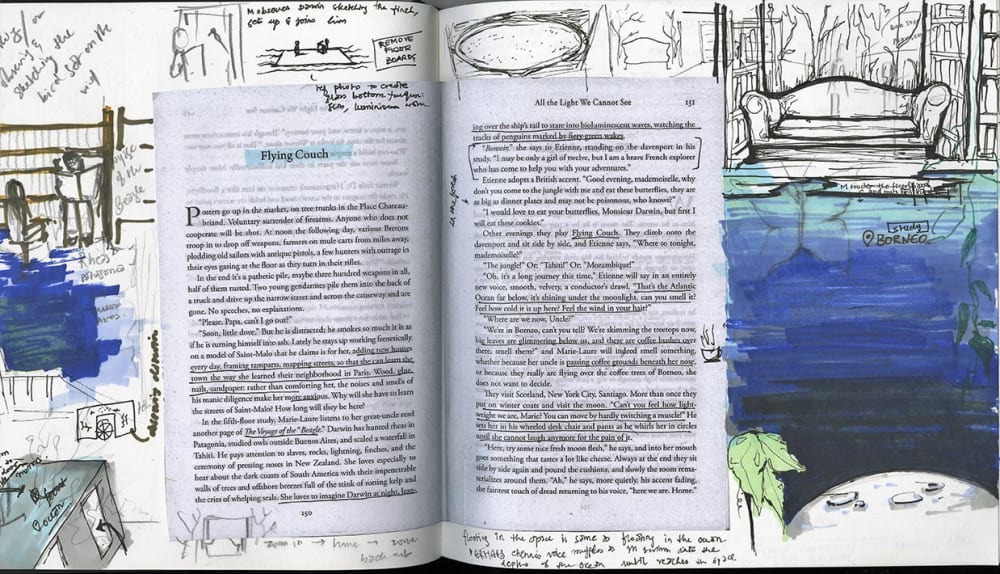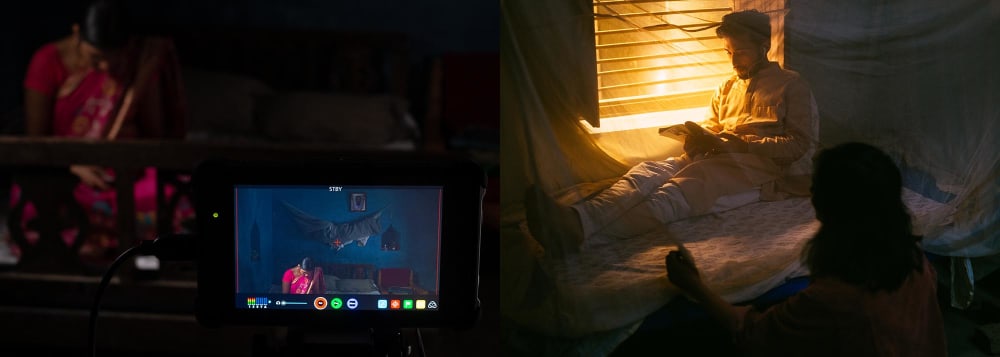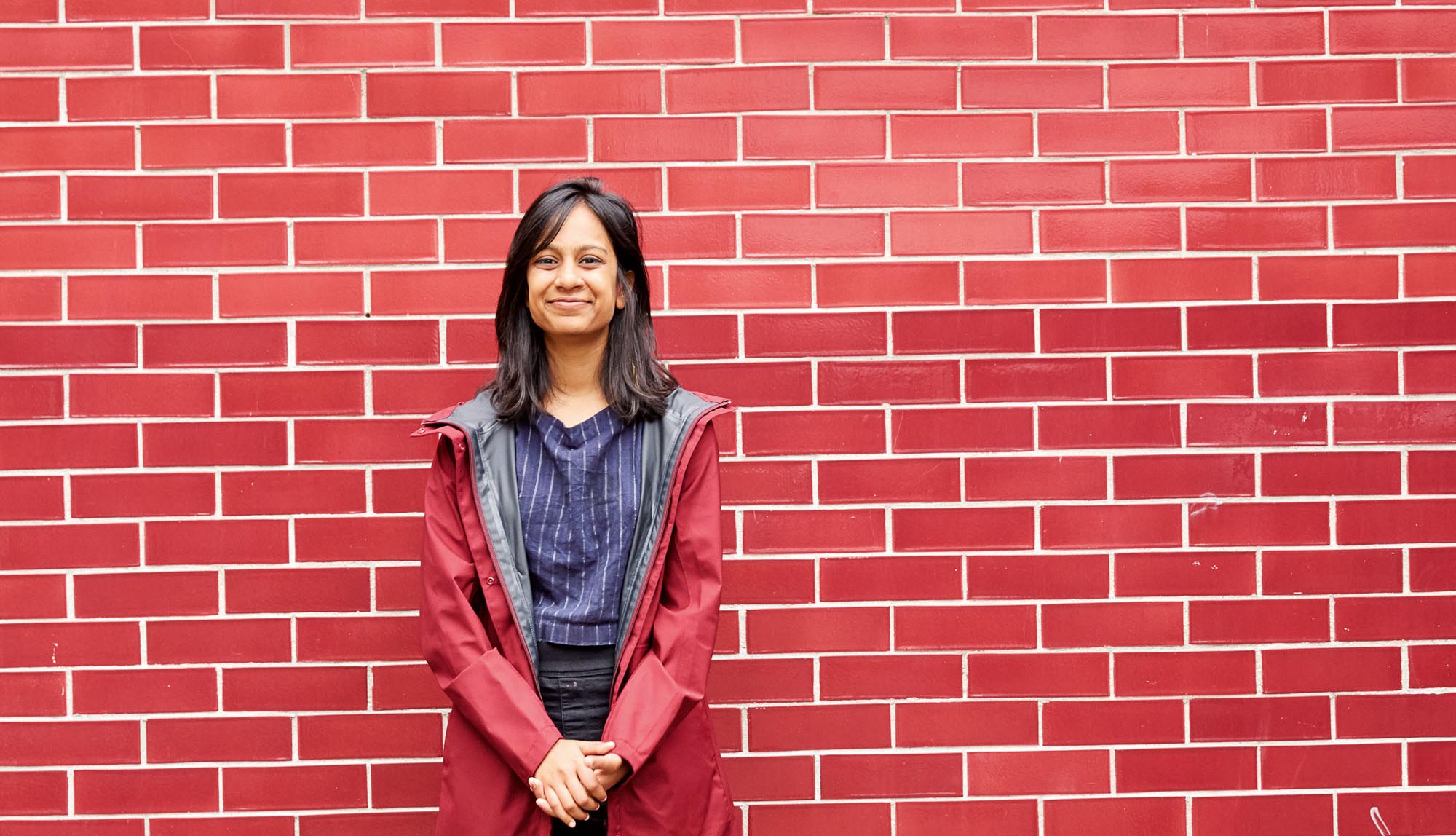What actually happens over the three years of a BA course at Wimbledon? Avni Goyal graduated this summer with a BA from Wimbledon’s Set Design for Screen course (now Production Arts for Screen). Here she tells us about the three years of her course, and what she has been up to since graduation.
First Year
The first year was really geared towards introduction to many new skills and getting comfortable with the university curriculum. In the first month, we studied vampires in popular culture for contextual studies, made a music video for a Beatles song, and collaborated with other theatre and screen courses to do performances in the theatre. Now that I think about it, it was the perfect introduction to what my three years at Wimbledon were going to be like. My favourite project was the stop motion animation project. We worked as a team of four, and designed all our sets, made the puppets, animated them and edited the films ourselves. We had complete creative control and it was the first time we had all made a proper film together.
I remember being intimidated by the machines in the workshop and the work produced by previous years, wondering how I would ever do that. By the end of first year, I had made two films, learned technical drawing, become a pro at woodwork and knew everything about the Georgian era.

Second Year
Second year was a lot about experimentation and collaboration. We collaborated with London College of Communication BA Film Practice students and Goldsmiths MA Filmmaking students to make short films. We were essentially their art department; constructing sets, sourcing props and being standby on set. We were taken to prop houses, which is like going to a theme park, but better. They are basically huge warehouses filled with furniture and props from every period and style. It answered so many of our questions about films.
Since a lot of projects at the beginning of second year are skill focused, it is essential to consider the conceptual side of set design too. One of the main projects that helped me explore that was Unit 5 Festival: a day when all second years in Wimbledon present unique projects dotted all around the college. My team and I explored the effects of different soundtracks and colour grading to create different genres from the same film.
I also really enjoyed exploring colour theory in a collaborative project with another course. We made a film together and the only rule was that no object in the film should be recognisable. It was amazing to make a film for a change without any filming schedule and storyboards and just playing with materials and experimenting.

In first year I had made a point of assisting the third years on my course. In my second year, I was assistant art director to Rufus Martin who built a full scale baroque set for a film collaboration with London Academy of Music and Dramatic Arts. I learned about period sets and scenic painting. It was a very ambitious and intense project, but I learned a lot from Rufus and it made me more confident in my own skills.
In my second year I also did my work placement at the BFI. The theme was India on Film. A team of six of us had to design a space that could work as a film set for multiple short films as well as an exhibition space. We were given a budget to work with. It was quite challenging, since we had a lot do between the six of us, but it was very rewarding.

Third Year
The final year has been quite unexpected. Since I was used to working on so many projects in the previous year, it was strange to think I would have a single project for the whole year. But to my surprise, as a designer, I developed more that year than in any other year. It is as if every project we did in the previous years is amplified, to see how much we can push ourselves.
The self-directed project gave me more time to understand my own pace of working, pushing myself to use unfamiliar softwares and preparing for the industry. There is a huge emphasis on the course on people skills and professionalism, which I think is absolutely essential.
The dissertation was very daunting and unlike any other piece of writing I have done before. But I used that opportunity to better understand who I am as a designer and what are the stories I want to tell.

Since graduating
Soon after my degree show, a theatre designer offered me a job as a concept artist. I worked with him for three months, and in that time I created concepts based on his designs for a musical and an opera which were performed in Norway and Finland respectively. Since the design process for theatre was quite different from film – a lot more organic and experimental – this turned out to be an excellent experience which helped me grow as a designer. I still continue to work for him, even since I moved back to India in October.

I am currently working as a production designer, on an independent feature film. We’re filming in a remote village in India and the location we’re using is the director’s ancestral home. The story spans over three decades and the house reflects this passage of time, which is where my work comes in. There’s clear mood shift and change in the colour palette of each decade, along with aging the house. Taking on this challenge was extremely daunting, with limited tools and only one assistant in my makeshift art department. But I have received a lot of help from the locals and I am quite pleased with how it looks. The crew has been absolutely amazing, and I couldn’t have asked for a better way to start things off in India.

I still want to continue working as a production designer here because I get to do a bit of everything – interiors, graphics, filmmaking and even exploring psychology. More than that, I absolutely love being on set. I would also love to continue doing concept art, do a bit of illustration and design for animations; I am open to possibilities!
Find out more about studying BA Production Arts for Screen.

